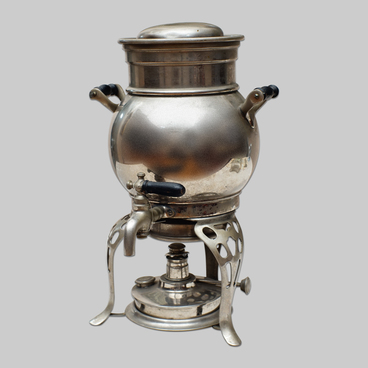Meissen porcelain is known, without exaggeration, all over the world. This type of porcelain got its name from the city of Meissen, which built the first manufactory in 1710. This happened soon after the alchemist Johann Friedrich Böttger, in collaboration with the scientist Ehrenfried Walther von TschIrnhaus, discovered the secret of the creation of hard-paste porcelain. The quality of this newly-discovered type of porcelain was on par with that brought from China.
The pictorial and sculptural richness of Meissen products had a huge impact on the development of both European and Russian porcelain. The manufactory produced vases, candlesticks, toiletry, and writing instruments. It also manufactured watch cases, table decorations, tobacco boxes, and mirror frames. Not to mention decorative porcelain statues of various genres, including bird and animal figurines. Meissen’s mass production changed with the style of the times, followed it, and often anticipated new trends.
In 1808, the import of Meissen porcelain products to Russia was restricted by decree of Emperor Alexander I. This was due to the establishment of domestic production and, therefore, the need to eliminate competition in the domestic market.
The exhibit on display is a vase with an egg-shaped body on top of a high round pedestal with handles resembling rolled up snakes. The edge of the neck, the lower part of the body, and the pedestal are decorated with relief finish. The rectangular image depicts a landscape with a house surrounded by trees on the bank of a pond. A wreath tied with a ribbon has the date “June 30, 1895” written in gold. This vase is a prime example of the Meissen neoclassical style.
The vase was painted over the glaze. The greatest advantage of overglaze painting is that it allows to use a much wider color palette. On the other hand, overglaze painting is a complex technique that requires a high level of craftsmanship.
Interestingly, in addition to the overglaze painting, the bottom of the vase features an underglaze mark of the Meissen manufactory in the form of two crossed swords. It is possible that the date was written by Russian artisans on an already glazed product of the Meissen manufactory.
The pictorial and sculptural richness of Meissen products had a huge impact on the development of both European and Russian porcelain. The manufactory produced vases, candlesticks, toiletry, and writing instruments. It also manufactured watch cases, table decorations, tobacco boxes, and mirror frames. Not to mention decorative porcelain statues of various genres, including bird and animal figurines. Meissen’s mass production changed with the style of the times, followed it, and often anticipated new trends.
In 1808, the import of Meissen porcelain products to Russia was restricted by decree of Emperor Alexander I. This was due to the establishment of domestic production and, therefore, the need to eliminate competition in the domestic market.
The exhibit on display is a vase with an egg-shaped body on top of a high round pedestal with handles resembling rolled up snakes. The edge of the neck, the lower part of the body, and the pedestal are decorated with relief finish. The rectangular image depicts a landscape with a house surrounded by trees on the bank of a pond. A wreath tied with a ribbon has the date “June 30, 1895” written in gold. This vase is a prime example of the Meissen neoclassical style.
The vase was painted over the glaze. The greatest advantage of overglaze painting is that it allows to use a much wider color palette. On the other hand, overglaze painting is a complex technique that requires a high level of craftsmanship.
Interestingly, in addition to the overglaze painting, the bottom of the vase features an underglaze mark of the Meissen manufactory in the form of two crossed swords. It is possible that the date was written by Russian artisans on an already glazed product of the Meissen manufactory.

